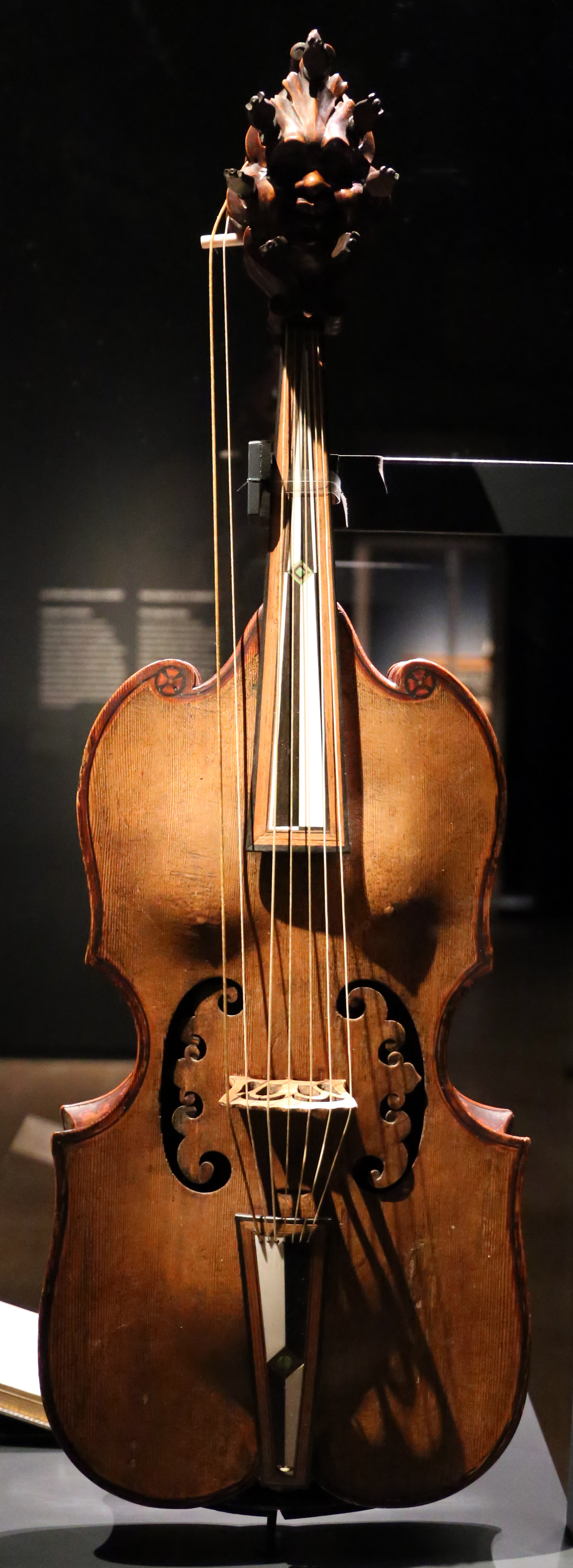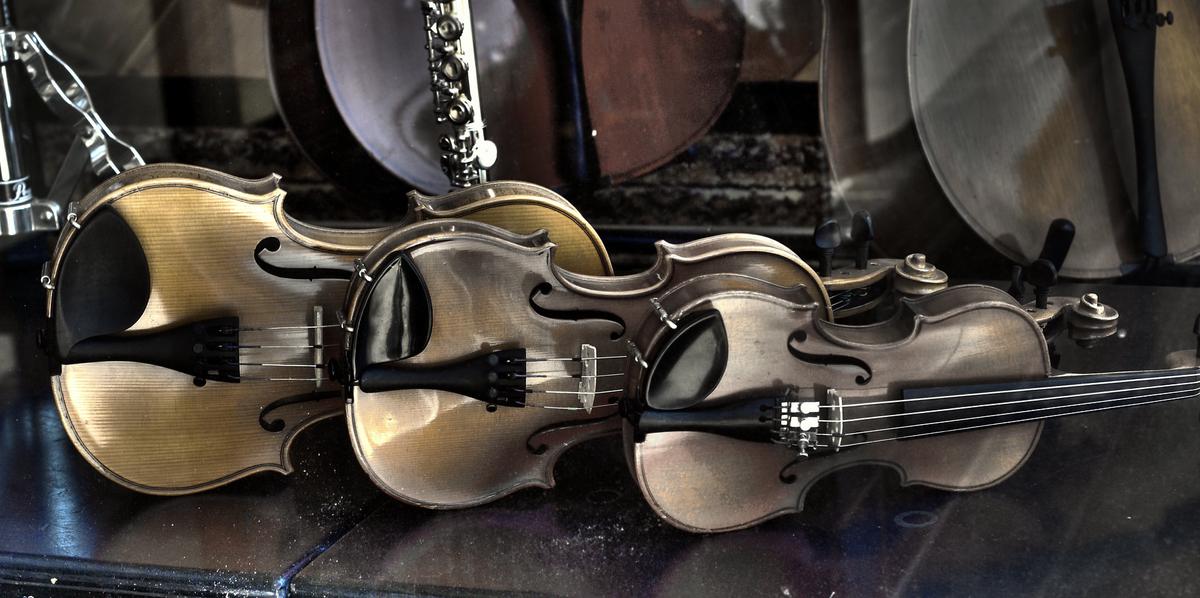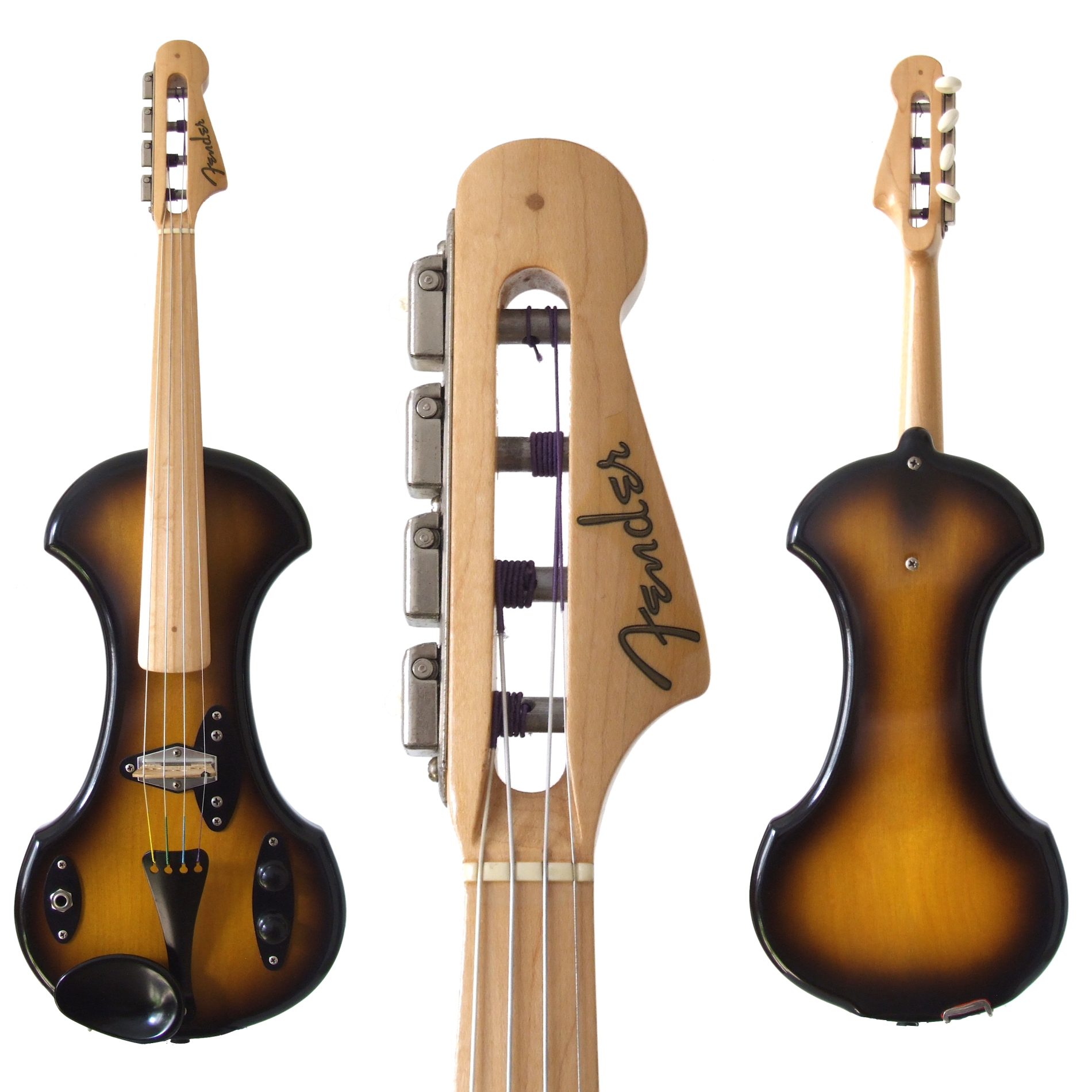Which instruments are in the violin family? What family is the violin in? The answer is historically-based!
The violin family consists of the violin, viola, cello, and the double string bass. These instruments were developed in the 1500s in Italy, when artisans like Antonio Stradivari and his contemporaries like Giuseppe Guarneri and Andrea Amati revolutionized the way we understand violin (and viola, cello, and bass) building to be what it is today. Before this renaissance of the violin, instruments were built very differently and sounded much different than what we know and love today.
History
The violin family of instruments came from the term viole da braccio, which was used to differentiate the violin from the viola da gamba, a completely different instrument. In fact, the word violin comes from the ancient Latin word vitula meaning "stringed instrument."
The violin and its relatives come from the Byzantine lyra. This ancient instrument is still played in many places in the world, especially its homeland of Greece and Crete. It is a bowed instrument, held upright, and has sounds reminiscent of traditional Indian music. As you watch the video, take note of how the musician holds the bow and the way the cello may have been developed because of the way this instrument is played.
As we moved through history, the lira da braccio was developed in part thanks to the Byzantine lyra. This instrument, although now nearly extinct, was highly popular in its heyday. There are only about 10 of these original instruments still in existence today.
With its seven strings and very boxy look, this instrument sounds very similar to a tinny-sounding fiddle. It has strings that reach a much lower pitch than a modern violin, and it has a haunting, beautiful sound. If you listen, you can almost hear the court musicians entertaining their lord or lady.

You'll notice that this predecessor of the violin has no chin rest, and the bow is very rustic-looking. It looks quite heavy and even clunky! However, this is the instrument that caused the Cremona artisans to rethink the design and forever alter the violin family of instruments. It's not hard to imagine them looking at this instrument and asking themselves, "How can we make this even better?"
Famed Family of Violin Makers
Within violin history, there are many violin artisans who many argue should be at the top of the list. We will not split hairs and pretend that there can be only one master stringed instrument creator! Instead, here is a brief and non-exhaustive list of the people who caused stringed instruments to be what they are today.
Antonio Stradivari
This Italian artisan is probably the most famous violin maker in the world, although he is hardly alone in the mastery of his craft. His violins today sell for millions of dollars, and those who play one are often more thrilled to talk about their instrument than they are to talk about themselves! Stradivari lived in Cremona, Italy in the 1500s and made many other instruments besides the violin. Scholars estimate that he made upwards of 1,116 instruments, and 960 of those instruments were violins alone. The current estimate for how many violins still remain in the world today hovers between 450-512. In addition to so many violins, Stradivari also made violas, cellos, and guitars, violas da gamba, and mandolins.
Giuseppe Guarneri
Guarneri's instruments are as highly regarded in the string world as Stradivari's. In fact, the most expensive violin honor belongs to Guarneri! The Giuseppe Guarneri lived in Cremona, Italy in the late 17th and early 18th centuries. He has been called by some experts as the "greatest violinmaker of all time." His instruments are preferred by some of the most accomplished violinists in the world, both present and past. The famed performer Jascha Heifetz preferred his Guarneri violin to all others, along with the likes of Niccolò Paganini and Isaac Stern!
Andrea Amati
His Italian workshop first developed the modern violin, even before Stradivari was born! This first, modernized version of the lira da braccio was an order from none other than Lorenzo de' Medici in 1555. He ordered an instrument that was like the lute, "but simple to play." Nobody knows for sure what happened to this instrument, but others that followed included a first version of the cello for Catherine de Médicis of France. This instrument has been called, "The King," and it still exists today. Catherine ordered 38 instruments, and 14 still survive! We have Amati to thank for the beautiful, elegant profile of the members of the violin family, not to mention the actual invention of the cello and viola!
Characteristics of the Violin Family
What qualifies an instrument to be part of the violin family? There are several answers to this question. One defining characteristic is that the instrument's shape is similar to one other. When looking at a violin and a viola, it's clear that the instruments are similar to one another, and to the untrained eye, identical. These instruments are also tuned in the same way, with pegs and fine tuners. Thirdly, their history unites them. Born in Cremona, Italy, all these instruments were developed by artisans on the Iberian peninsula from the mid-1500s to mid-1700s.
Another characteristic that defines members of the violin family is the complete lack of frets on the fingerboard. Where guitars, mandolins, electric basses and other stringed instruments have guides for the player's fingers, the violin, viola, cello and bass have no such frets. Instead, musicians rely on muscle memory to play in tune.
All these instruments also have 4 strings with the exception of the string bass which occasionally has 5 strings. For that reason, some purists believe that the string bass really doesn't belong in the violin family. However, people will argue that it fits every other characteristic, including having a soundpost and bass bar, and thus it belongs.
How they are held does not unite these instruments, however. Where the violin and viola is neatly tucked under the chin with a shoulder rest, the cello is rested between the knees of the musician. The bass is held upright with its musician either seated on a high stool or standing next to the instrument as they desire.
Ranges
The range of each of these instruments overlaps one another. The violin's range is G3 to E7, and the viola's is C3 to A6. The cello's range is C2 to A5 and the double bass is E1 to C5. If the double bass is equipped with an extender, then its range is C1 or B0.
One outstanding member of the string family is the octobass, a very heavy, very unweidly instrument that did not take off in the string world. Only a few of these instruments exist, but they are sometimes called for in modern music and some Romantic-era scores. The range of the octobass is a full octave below the double bass.
It bears note that if you are ever in Phoenix, Arizona, you can see the octobass in person at the Musical Instrument Museum!
In Conclusion
The violin family is united in history, sound texture, and technique! The long road the violin family has traveled to be what it is today is thanks to talented and tenacious artisans and their drive to make the most beautiful instrument they could.




